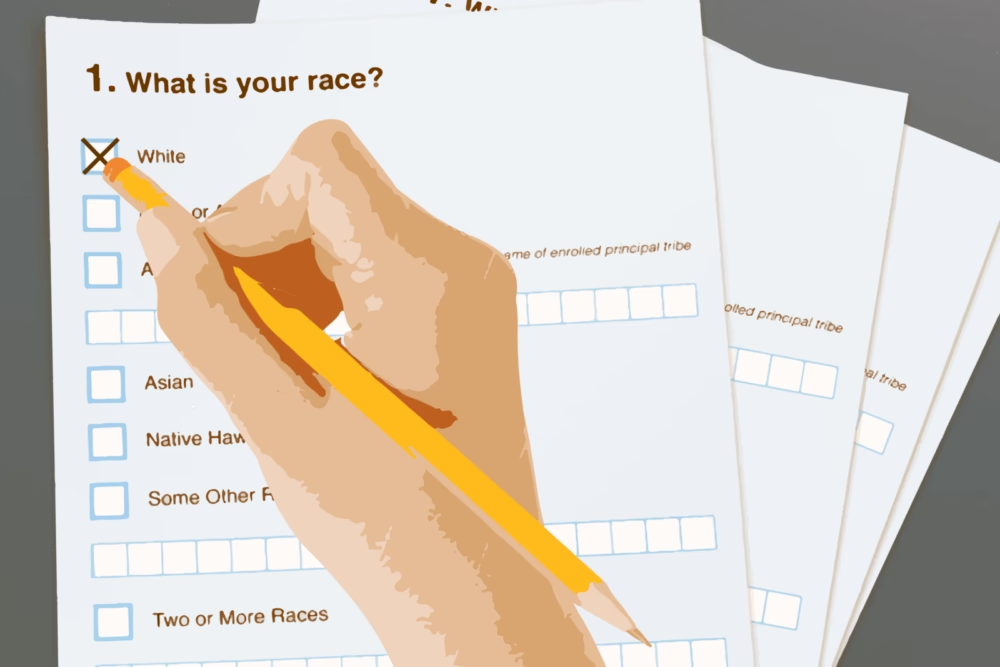The census data is out and things are looking bearish for white folks. The white population is down by 8.6%, and the non-white population is going up, up, up.
With headlines this juicy, it didn’t take long for the politicos to bite. Charles Blow wrote in the New York Times that “It Was a Terrifying Census for White Nationalists.” The Hill argued that the “fall in white population could add fuel to nativist fire.” Tucker Carlson said that those looking at the headlines favorably were “cheering the extinction of white people.”
But let’s not get ahead of ourselves. Where’d all the white people go, anyway?
When you dig into the census data, the story starts to look a little different. Back in 2010, the “Hispanic or Latino” population of the United States accounted for 50 million Americans, 26 million of whom listed their race as white. By 2020, the Hispanic population had grown to 62 million, but the Hispanic white population plummeted by 53 percent to 12 million.
Over the same period, the Hispanic “Some Other Race” category increased by 8 million people, or 42 percent, and the Hispanic “Two or More Races” category skyrocketed from just 3 million to 20 million, a jump of 567 percent.
So what sounds more reasonable: a majority of white Latinos left the country or died between 2010 and 2020, or a significant percentage of people who checked one box a decade ago decided to check a different box last year? We can’t track everyone down and ask, but we have a strong suspicion that it’s the latter.
The real story of the census, then, isn’t that the white population is declining because their deaths outnumber births, but because of the abstract idea of racial identity. 14 million white Latinos didn’t disappear––they just stopped listing themselves as white.
Race is complex, and we wouldn’t be surprised if some people did start to think differently about their racial identity. But the truth is probably even more simple than that. An article on the Census Bureau website explains that “improvements and changes enabled a more thorough and accurate depiction of how people self-identify.” Well aware of the massive changes in the count of white people in America, they asserted “We are confident that differences in the overall racial distributions are largely due to improvements in the design of the two separate questions for race data collection and processing” (emphasis added). Demographic and identity shifts are at play, but changes in question design and methodology are what’s really driving this change.
Now, to be fair, the non-Hispanic white population did also decrease. But the decline was a modest 5 million people, or 2.6 percent of the category, and dwarfed in size by the decrease in the Hispanic white population. Moreover, the non-Hispanic “Some Other Race alone” and “Two or More Races” categories increased by 180 percent and 121 percent respectively, constituting more than 8 million Americans. While it’s more difficult to suggest that many of these individuals listed themselves as white on the 2010 census, the Latino example should show that these categories are much more malleable than you might expect.
So what does this mean for politics?
Who knows.
America is becoming more diverse: that much is true. But pundits have a poor track record in predicting how that will translate into political outcomes in the long term. Analysts assured us that the growing Hispanic population would deliver victories for Democrats, then were caught off-guard when Hispanic voters swung away from Democrats in the 2020 election. In 2004, John B. Judis and Ruy Teixeira published “The Emerging Democratic Majority,” arguing that demographic changes would doom the Republican Party to perpetual defeat in national elections. After Obama’s election, people thought that it just might have been proven right. But we don’t have to tell you that elections are still competitive, even if former President Trump couldn’t win the popular vote.
The problem is that politics is complex. Racial identity is complex. How the two will influence each other over decades is impossible to predict. In the meantime, it’s best we acknowledge the 2020 census for what it really showed us: how you ask questions on surveys matters a great deal, and the white population isn’t declining nearly so rapidly as sensational headlines might lead you to believe.






